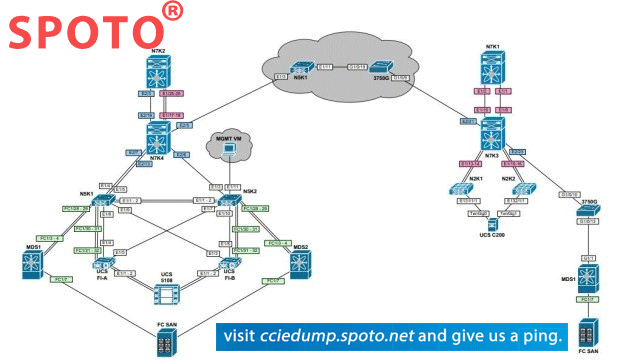It took me a little more than a year to pass my CCIE R&S lab exam after the written exam. The time it takes you would depend on your current knowledge and skills and also on the time you are willing to spend per day for CCIE studies. At the very beginning of your lab preparation, you are faced with two important decisions: selecting a training provider and gaining access to a practice lab. In the following sections, I would describe the resources and options available to CCIE candidates and how I selected and used those resources for my own studies.
The troubleshooting part of the CCIE Routing and Switching 4.0 lab exam is conducted totally on a virtual environment which may come as a surprise to many. The CCIE lab proctor would call it a “pod” but it is built on something called IOS on Unix (IOU) and L2IOU (Layer 2 IOS on Unix) which run as a native process under Linux. It is necessary for you to have to work with a large network that usually contains 30 – 40 routers and switches. You get a graphical representation of the network on a web page. It is one large scenario and you may need to scroll to see the whole of it. You can click on a device right from the browser and it launches a telnet client to give you console access to that device. Cisco does not make the IOU and available to external parties through some online labs offered by Cisco are known to be running on IOU. The lab exam consists of around ten trouble tickets with each trouble ticket carrying 2 or 3 points.
The total duration of the troubleshooting part holds 2 hours or 120 minutes and there are around 10 trouble tickets. so you have some twelve minutes to solve each trouble ticket. If you get stuck on a certain trouble ticket, make a note of it and move on to return to it later if time permits. You need to score 80% to clear the troubleshooting part and you may still be able to pass if you get the res right. Also, several trouble tickets may also apply some restrictions on what you cannot do to solve the problem. You not only need to fix the fault but also have to do it meeting those restrictions.
A simple trouble ticket deals with a small part of the overall topology and would typically involve only 3 – 5 devices. The trouble ticket would note you what is not working like host A not being able to reach host B. You will have to figure out what is causing the problem using show and debug commands in combination with ping and traceroute commands. There may be one or more faults in the configurations of one or more devices. The challenge is to locate the fault itself; once you have located the fault fixing it would simply require one or two configuration lines.
The configuration part of the CCIE Routing and Switching lab contains several subsections. You practiced in real equipment which may or may not be located at the same facility. In my case, the physical racks were located at a central facility with remote access provided at the lab location. It does not matter where the physical rack is because the lab does not involve any physical troubleshooting. It is usually the best to solve the subsections in the given order. If you find yourself stuck at a certain subsection, move on and return to it later. But several parts cannot be skipped, for example, layer 3 technologies cannot be configured before first configuring layer 2 technologies.
It is good to have the ability to type without looking at the keyboard at a decent speed but CCIE lab is not a typing competition. Usually, after taking several hundred hours at the CLI preparing for your CCIE, you would already have developed decent typing skills. The proctor is there to ask questions but I did not find this ask-the-proctor thing much helpful as I needed to clarify the meaning of certain problem statements that were vague. If you find yourself in a similar situation use your own best judgment, and move on. To save your configurations frequently just avoiding a certain piece of hardware gets stuck and needs to be rebooted. If you are suspect of a hardware problem, and you should contact the proctor immediately and he gives you help.

 Join Telegram Study Group ▷
Join Telegram Study Group ▷














